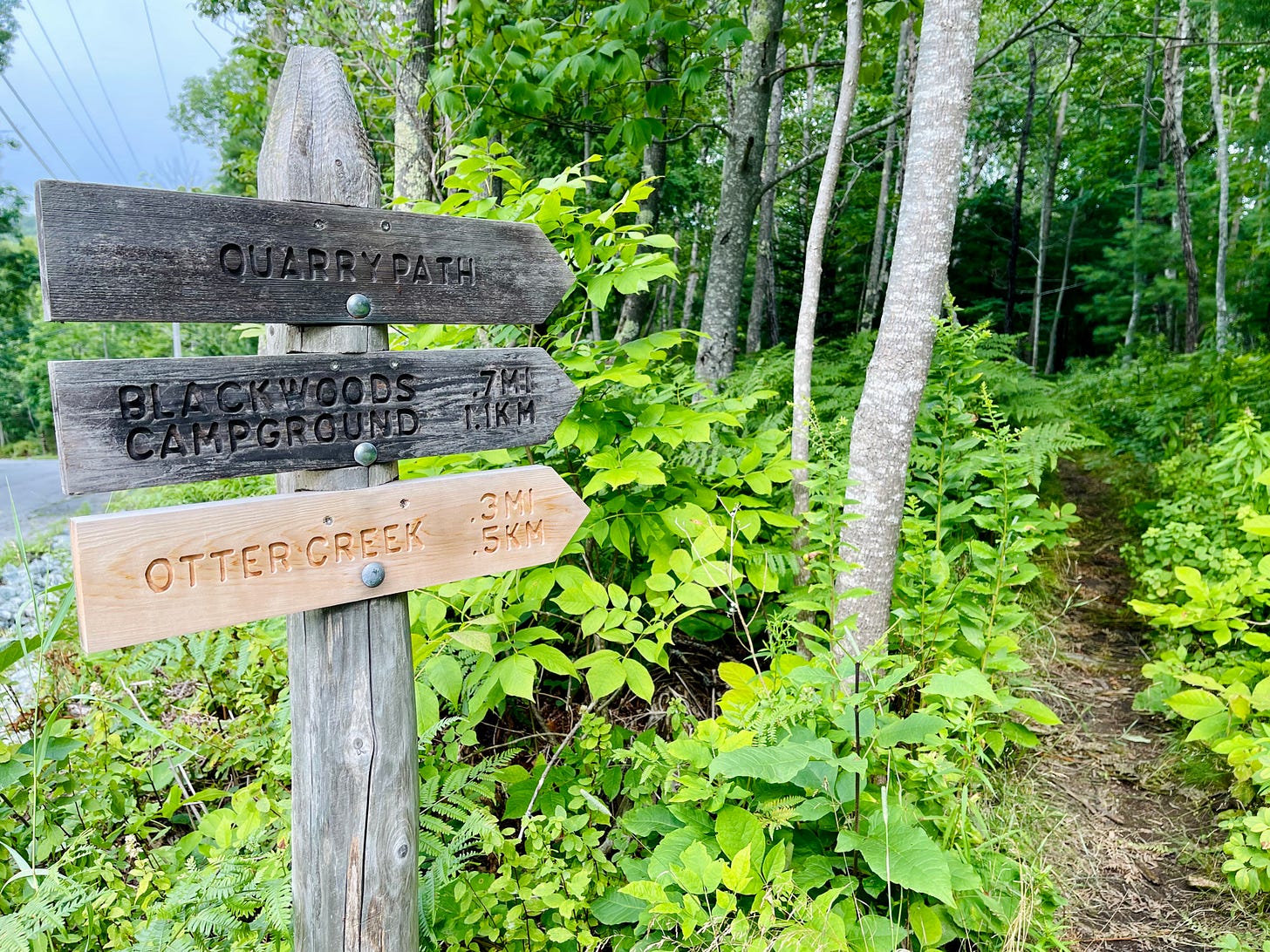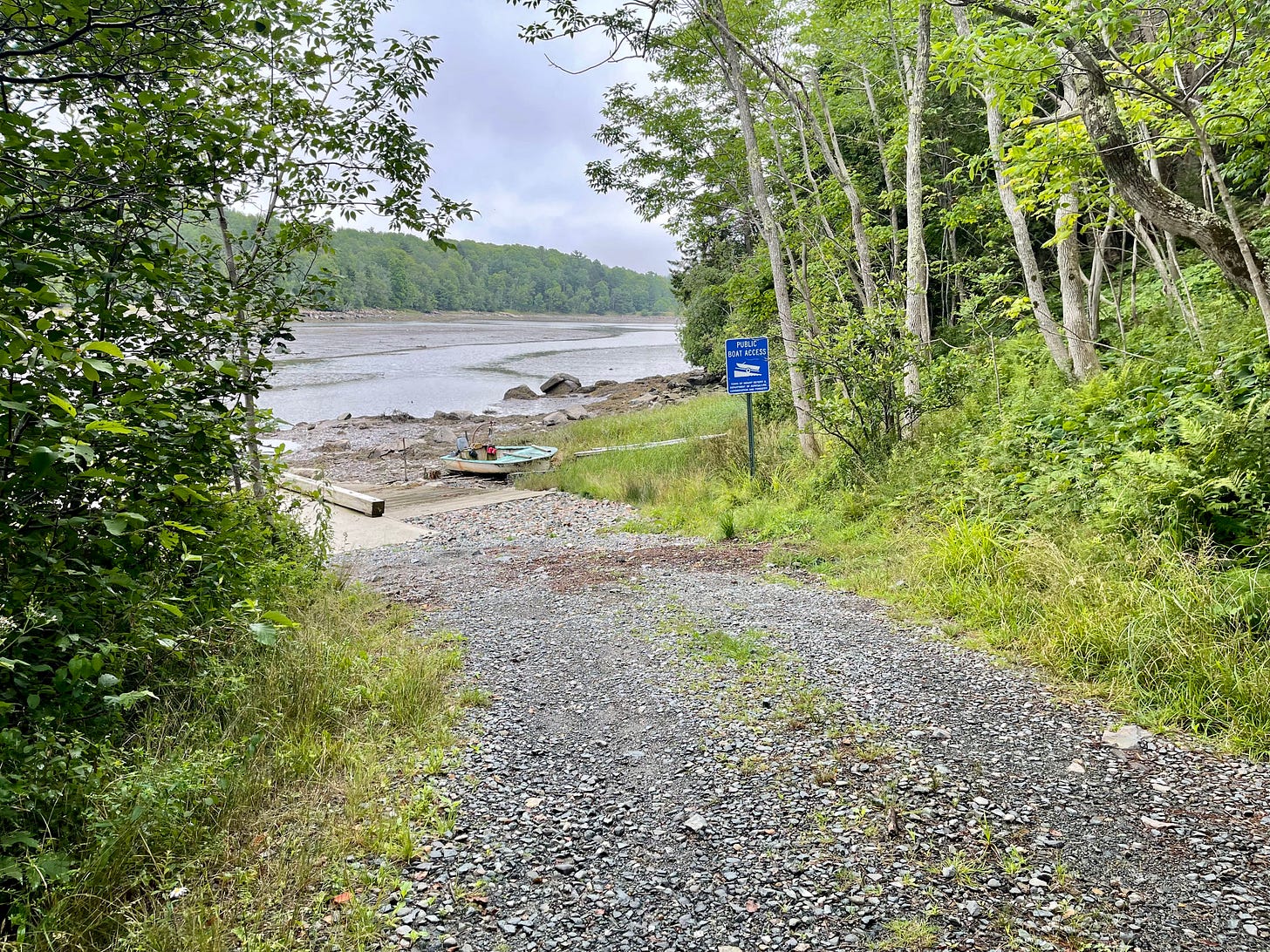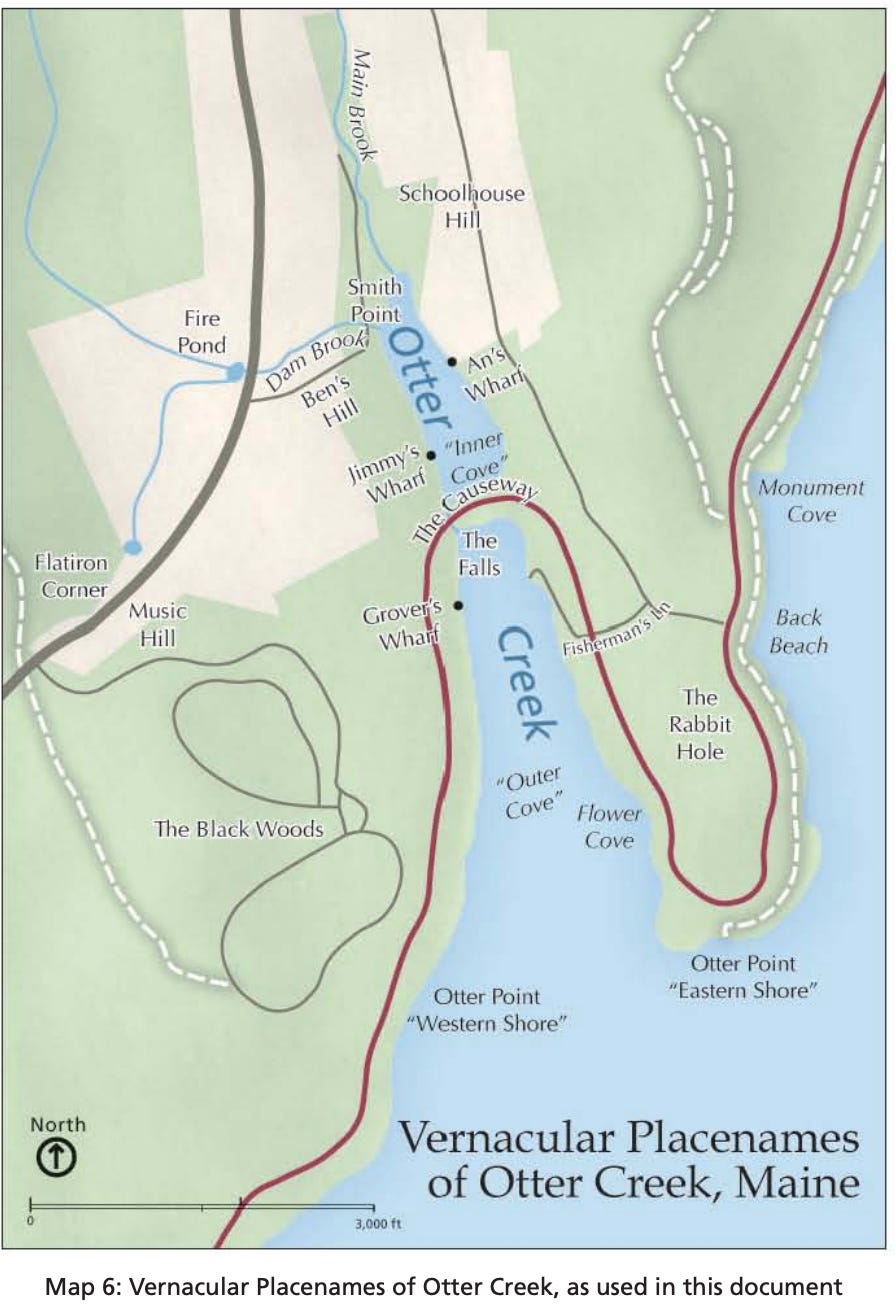Town Manager Continues Quest to Make Otter Creek a Working Waterfront Again
Lunt presented to Acadia Advisory Commission
The Bar Harbor Story is generously sponsored by Side Treats.
MOUNT DESERT—Town Manager Durlin Lunt likened the town’s progress toward restoring Otter Creek’s waterfront as something similar to being on a gerbil wheel for years.
There have been very nice discussions, he told members of the Acadia Advisory Commission on Monday, September 9, but no real forward motion in the town’s desire to get Otter Creek’s working waterfront back as managers, park superintendents, and elected officials change.
“It’s been a long time, almost 90 years,” he said. “One individual’s dream became a nightmare for that village.”
That individual was John Rockefeller who undertook a series of land acquisitions that would eventually be part of creating Acadia National Park.
“The original acquisition of Otter Creek’s harbor was very irregular,” Lunt said. He wondered why Otter Creek development occurred in such a manner while the coves of Northeast Harbor and Southwest Harbor, which had expensive homes and hotels on their shores were left more alone. Otter Creek’s shores had structures as well, he said, but they were “very simple working class structures” and the changes to Otter Creek’s waterfront happened “during challenging times when opportunities were few.”
The Hancock County Trustees of Public Reservations was founded in 1901 and its mission, Lunt said was “to acquire lands of scenic beauty, historical significance, scientific study, or sanitary value.” By 1913, it had acquired 5,000 acres on MDI. It donated the lands to the federal government in 1916. That land became Lafayette National Monument, which eventually became Acadia National Park.
In 1911, the park boundaries didn’t come near the fishing community of Otter Creek. In 1922, those boundaries had moved closer.
“The will of the trustees to not impinge on the cultural and economic rights of Otter Creek maintains up to 1936,” Lunt said at a February meeting of the commission, referencing documents and letters supporting that the trustees did not want to harm local communities as the park was created. “What was once a coastal village is no more. The village of Otter Creek has probably had the most impact of any population center on Mount Desert Island. None of the others have had such a drastic change.”

In February, the Town of Mount Desert sought the endorsement of the commission and though some commissioners backed Lunt’s proposal and all said he articulated the facts well, there was hesitancy about giving the three-thousand square feet of land back to help make that town landing and boat launch at Otter Creek more usable.
“The old excuses are not acceptable,” Lunt said Monday, not when it comes to restoring that village’s waterfront.
The town of Mount Desert approved a resolution last week to restore that working waterfront. The resolution will also likely become part of the town’s comprehensive plan.
“It used to be a beautiful estuary, full of life,” Stevie Smith said of the inner cove during public comment at the Acadia advisory meeting. There were mussels and clams and fish that came into the harbor.
“And now it’s dead. It’s gotta be taken care of,” Smith said. “Clean it up. Clean the mess up, that’s all we ask.”
GOING FOR THE GOALS
Mount Desert’s Otter Creek resolution explains that tidal flushing is important to Otter Creek’s inner harbor and that “access to the inner harbor has been severely diminished by the installation of a causeway.”
That causeway decreases access to Otter Creek’s inner harbor by fishing vessels and others. It also diminishes exits from the inner harbor’s small boat launch area out to the bay.
It’s the only way boats have to get to Otter Creek and its cove. Because of how the causeway is built, however, only very small boats can move from the landing to the bigger cove and ocean. This has not always been the case.
The town’s resolution also mentions that the boat ramp and launch area need to be re-established and made more usable via a land acquisition from Acadia National Park and the Department of Interior, which owns the surrounding lands.
The landing in Otter Creek rests at the end of a steep, narrow gravel road on the inner harbor and has been used by Otter Creek residents who have accessed it for at least 127 years.
In public comment, Mike Hyde, said the current site was a terrible place to put a boat ramp and it might be a good idea to address the inner harbor first rather than immediately fix the launch. The site, he said, is steep. It is rocky. At low tide, the water is well below the launch ramp, rendering the ramp useless. At high tide, it’s difficult to impossible to get a decent sized boat under the causeway. A global approach, he said, is a good idea.
Finally, the road to the landing is narrow. It’s almost impossible for most people to turn their vehicles around. That’s especially true if that vehicle is hauling a boat.
“A working waterfront will in no way degrade the viability of Acadia as a cultural and scenic treasure,” Lunt said to the committee on Monday. “You need not restore the fish houses, or the wharves so wantonly destroyed by former park administrations, merely allow for the reasonable use of those few that remain.”
Other Mount Desert goals include clearing the vista so that people can see the harbor again as well as making the inner harbor more secure, restoring the traditional trails that were there before the land became part of the park, and determining the ownership of Quarry Road.
BOAT LAUNCH EXPANSION SUPPORTED BY LANDS COMMITTEE
Darron Collins, the head of the Lands Committee of the commission, said the committee has met again to discuss the Otter Creek town landing and boat launch. He told the commission that everyone on the committee was entirely supportive of the work needed for the boat launch’s improvement.
“We just felt that the most appropriate way forward for doing that was doing an exchange,” he said. A land exchange would be one piece of land that the park desires is exchanged for the piece of land that would expand the Otter Creek town landing and boat launch.
Collins said that beyond a land exchange, there may be another opportunity or other method for acquiring the land needed to make the boat launch more usable.
That might be legislation.
That might be a land exchange or swap that involved a third party.
The committee, he said, wanted to encourage the Town of Mount Desert to sit down with Acadia National Park staff to pursue those options.
“We are at the ready to help make that happen in any way we can,” Collins said.
“I’m very happy to hear that. Certainly, we are well prepared to sit down with the superintendent and the administration when they have the time,” Lunt said. He also mentioned that possibility at the Mount Desert Selectboard meeting last week.
“It is our firm opinion that the most efficient manner moving forward is land exchange,” Friends of Acadia President Eric Stiles said during the meeting.
For the park to give away land without such an exchange, that gift has to occur via an act of Congress. However, minor adjustments to the park’s boundaries via land swaps can occur as a business practice.
“Legislation tends to die,” Stiles reasoned. It can also take a long time.
After the meeting, Stiles reiterated that if Friends of Acadia was asked to play a supporting role in that exchange, the organization would stand ready to help. The park, he stressed, always tells the organization what the park’s priorities are and never vice versa. Those priorities might be seasonal housing, like it is now. However, other emergency priorities can also occur. This happened earlier this year, when the park asked FOA for help to reopen storm ravaged areas like the Ocean Path.
https://friendsofacadia.org/membership-giving/storm-restoration-campaign/
https://friendsofacadia.org/news/ocean-path-repairs-acadia-equipment/
Photos: Shaun Farrar/Carrie Jones/Bar Harbor Story
If you’d like to donate to help support us, you can, but no pressure! Just click here.
If you’d like to sponsor the Bar Harbor Story, you can! Learn more here.













